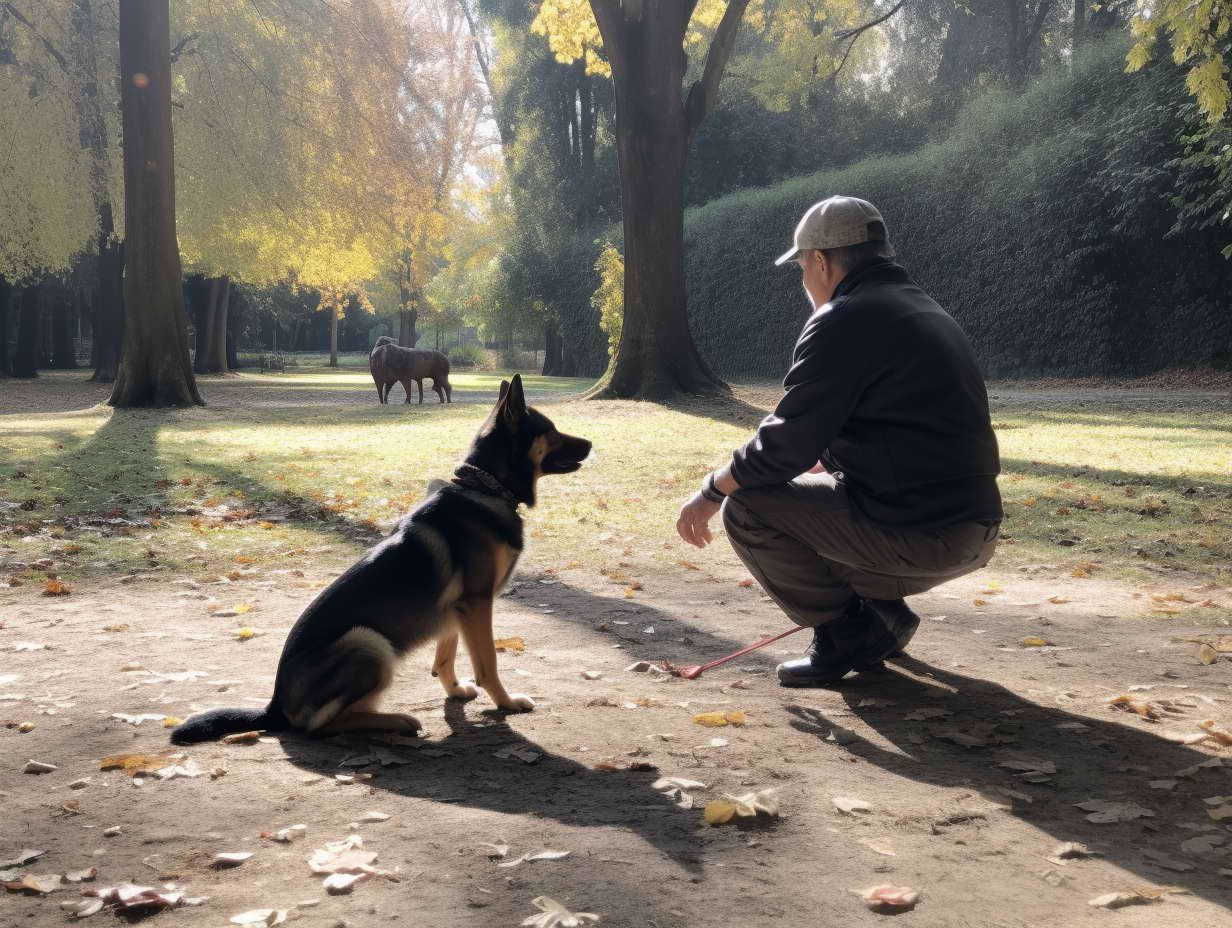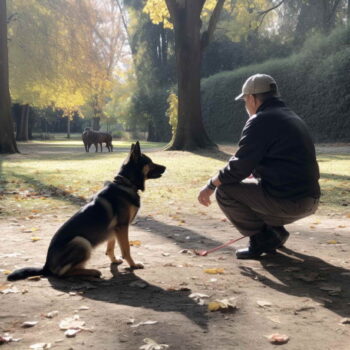Dog Training In The Army: A Comprehensive Guide
Dog training in the army is a crucial aspect of maintaining disciplined and effective canine units. The process involves specialized techniques that ensure military dogs are well-behaved, obedient, and capable of performing a range of tasks. In this comprehensive guide, we’ll delve into the intricacies of dog training in the army, covering various training methods, benefits, and insights based on both professional expertise and personal experiences.
Dog Training In The Army: Setting the Foundation
Dog training in the army begins with establishing a strong foundation. This phase lays the groundwork for subsequent training steps. During this period, handlers focus on building a strong bond with their canine companions. This bond is essential for effective communication and cooperation throughout the dog’s military career. Positive reinforcement techniques are employed to encourage desired behaviors, creating a solid platform for advanced training.
Basic Commands and Obedience
Basic obedience is a fundamental aspect of dog training in the army. Military dogs must respond promptly to essential commands, ensuring they can follow instructions even in high-stress situations. Commands like “sit,” “stay,” “heel,” and “down” are extensively practiced. These commands not only facilitate control but also foster discipline and focus, qualities that are invaluable in various military operations.
Advanced Training: Specialized Tasks
As military dogs progress, they undergo advanced training to perform specialized tasks. These tasks include search and rescue, bomb detection, tracking, and apprehension. Each task demands a specific skill set, and training is tailored accordingly. For instance, bomb detection training involves teaching dogs to identify scents associated with explosives. Similarly, search and rescue training hones the dog’s ability to locate individuals in challenging environments.
The Role of Positive Reinforcement
Positive reinforcement lies at the heart of effective dog training in the army. This technique involves rewarding desired behaviors to encourage their repetition. Treats, toys, and praise are common rewards used to reinforce positive actions. By associating obedience with positive outcomes, dogs become more motivated to follow commands. This positive approach enhances the bond between handler and dog, fostering trust and cooperation.
Canine Health and Well-being
Ensuring the health and well-being of military dogs is a top priority. Proper nutrition, regular exercise, and routine medical care contribute to the overall fitness of these animals. Handlers are trained to identify signs of discomfort or illness, allowing for swift medical attention. A healthy dog is better equipped to handle the physical and mental demands of military training and operations.
Benefits of Dog Training in the Army
Enhanced Security and Defense
Dog training in the army plays a pivotal role in enhancing security and defense capabilities. Well-trained military dogs possess heightened senses, particularly their acute sense of smell, which allows them to detect hidden threats such as explosives, drugs, and even enemy combatants. Their ability to identify concealed dangers in various environments, including vehicles, buildings, and open areas, makes them invaluable assets in safeguarding military installations, checkpoints, and critical areas.
Versatility in Tasks and Environments
One remarkable benefit of dog training in the army is the versatility of these canine companions. These dogs are trained to perform a diverse range of tasks, making them adaptable to different scenarios and environments. Whether it’s searching for explosives, tracking individuals, or providing emotional support to soldiers, these dogs excel across various roles. Their ability to transition seamlessly from one task to another makes them indispensable assets that can be utilized in multiple operational contexts.
Camouflage Detection and Tracking
A unique skill possessed by some military dogs is their ability to detect camouflage materials. These materials are often used by enemies to conceal themselves or their equipment. Military dogs with specialized training can identify the scents associated with these materials, alerting their handlers to potential threats. Moreover, these dogs are trained in tracking, enabling them to follow scents over challenging terrains and assisting in locating hidden individuals or objects.
Boosted Morale and Camaraderie
The presence of trained military dogs has a significant positive impact on the morale of troops. These dogs not only provide companionship but also evoke a sense of comfort and familiarity, especially in high-stress environments. Soldiers develop strong emotional bonds with their canine partners, which contribute to a sense of camaraderie and unity within units. The loyalty and unconditional support offered by these dogs create a positive atmosphere and boost the overall well-being of military personnel.
Efficient Search and Rescue Operations
In times of crisis, such as natural disasters or combat situations, trained military dogs become invaluable assets for search and rescue operations. Their keen sense of smell allows them to locate individuals buried under rubble or hidden in challenging terrains. Their agility, strength, and determination enable them to access areas that might be inaccessible to humans or machinery. These dogs significantly enhance the efficiency and success rate of search and rescue missions, potentially saving lives in the process.
Strengthening Bonds Between Soldiers and Dogs
The partnership between soldiers and their trained dogs goes beyond professional duties. Handlers often form deep emotional connections with their canine companions, treating them as trusted friends and confidants. This bond fosters a sense of responsibility and devotion among handlers, motivating them to invest time and effort in the dogs’ training and well-being. The mutual trust and understanding developed between soldiers and dogs enhance not only their effectiveness in the field but also their overall quality of life.

Challenges and Solutions in Dog Training for Military Roles
Adapting Training Techniques for Different Breeds and Temperaments
One of the significant challenges in dog training for military roles is the diversity of breeds and temperaments. Different breeds possess distinct characteristics that influence their learning styles and responses to training methods. Handlers must be adaptable and skilled in tailoring their approaches to suit the specific needs of each dog. For instance, while some breeds excel in tasks that require aggression and assertiveness, others are better suited for tasks demanding precision and keen senses. This challenge requires a deep understanding of canine psychology and behavior, enabling trainers to maximize the potential of every individual dog.
Addressing Stress and Anxiety in High-Stress Environments
The demanding nature of military operations exposes dogs to high-stress environments that can lead to stress and anxiety. Similar to humans, dogs can experience emotional strain when faced with unfamiliar situations, loud noises, or intense situations. This challenge can impact the dog’s performance and overall well-being. To address this, military dog training programs now incorporate specialized techniques to alleviate stress. These techniques include exposure to simulated combat scenarios, gradual desensitization to loud sounds, and interactive exercises that engage the dog’s mind. By providing coping mechanisms, handlers help dogs remain focused and composed even in challenging circumstances.
Balancing Work and Rest for Optimal Performance
Maintaining an optimal balance between work and rest is essential for the peak performance of military dogs. Overworking a dog can lead to physical exhaustion, decreased attention, and increased susceptibility to injuries. Conversely, inadequate activity and mental stimulation can result in boredom and reduced efficiency. Handlers face the challenge of creating structured routines that include training sessions, physical exercise, mental stimulation, and sufficient downtime. This requires meticulous planning to ensure that the dog remains in top physical condition while maintaining enthusiasm for tasks.
Ensuring Continued Training and Skill Enhancement
Continuous training and skill enhancement are necessary to keep military dogs sharp and ready for action. However, this poses a challenge due to the evolving nature of military operations and the need to adapt to new threats and tactics. Handlers must regularly update their dogs’ training to ensure they are proficient in the latest techniques and technologies. This challenge demands a commitment to ongoing education, keeping abreast of advancements in dog training methodologies, and incorporating them into training routines.
Strengthening the Handler-Dog Relationship
Establishing and maintaining a strong bond between handlers and military dogs is essential for effective teamwork. This challenge involves overcoming the physical and emotional demands of military life. Handlers often form deep connections with their dogs, and the separation during deployments can be emotionally challenging. Solutions include encouraging handlers to spend quality time with their dogs during downtime, allowing for play and relaxation. Additionally, involving handlers in the training process fosters a sense of ownership and a stronger sense of partnership.
Utilizing Technology for Enhanced Training
The integration of technology presents both opportunities and challenges in dog training for military roles. While technological advancements can aid in training and provide real-time feedback, they also require handlers to adapt to new tools and methods. Incorporating technology such as virtual simulations, remote training devices, and wearable sensors can enhance training outcomes. However, ensuring that handlers are proficient in using these tools effectively is crucial to realizing their benefits.
Frequently Asked Questions (FAQs)
How long does it take to train a military dog?
The duration of training varies based on the dog’s age, breed, and intended tasks. Generally, it takes around 4 to 8 months to complete basic training, followed by several more months for specialized training.
Can family dogs be trained for military roles?
While family dogs can be trained, military dogs undergo a rigorous and specialized training that not all family dogs are suited for. Breeds with specific traits and characteristics are often preferred for military roles.
Do military dogs form strong bonds with their handlers?
Yes, military dogs form incredibly strong bonds with their handlers. The intensive training and constant interaction foster a deep sense of trust and companionship.
How are military dogs cared for after retirement?
Retired military dogs are often adopted by their handlers or loving families. They receive medical care and live out their retirement years in a comfortable and nurturing environment.
Are all military dogs trained for combat roles?
No, not all military dogs are trained for combat. Some are trained for tasks such as search and rescue, detection of explosives or drugs, and providing emotional support to soldiers.
What qualities make a good military dog?
Good military dogs possess traits like intelligence, obedience, loyalty, courage, and a strong sense of smell. These qualities enable them to excel in various military roles.
Conclusion
Dog training in the army is a testament to the remarkable partnership between humans and canines. Through expert training techniques, positive reinforcement, and specialized tasks, military dogs become invaluable assets. Their contributions extend beyond their roles, enhancing security, morale, and efficiency in military operations. By understanding the intricacies of dog training in the army, we gain insight into the exceptional abilities and unwavering dedication of these furry heroes.


Leave a Reply